From October 20 to November 18, 2023, Forever Is Now 03 will be open for visitors in the Pyramids of Giza, Egypt. Curated by CulurVator – Art De’Egypte, the exhibition showcases artworks by 14 international artists.
“Taking place during a tumultuous time that sees our present disturbed in myriad ways, the exhibition is an homage to the continuum of our civilization and our relentless pursuit of life. Hope and faith are anchored within our knowledge of the past and in the unwavering belief that there is no conception of the future without history. We look at the narrative of past achievements to find inspiration for successive generations. Forever is Now 03 is not simply a revival of this history, however, for the past can never be complete in the present. Rather, it is a contribution to a contemporary artistic legacy in a place of worldwide historical significance.”
Here are the works of the participants of ‘Forever is Now 03’:
Arne Quinze
Arne Quinze, a Belgian contemporary artist known for his works in painting and sculpture, has created a piece of art titled “Lupine Aurora” that pays homage to the ancient and rich Egyptian culture where the sun held great significance. The artwork features a circular sculpted outline that represents the sun, which was considered as the fundamental element for all life.
Artur Lescher
Artur Lescher’s “Observatory Meta Oiko” is conceived as a participatory piece made as an observation instrument for the visitor. The key idea here is to invert the scales to look at the magnificent panorama of the pyramids from a different point of view and also to consider the human scale from a new framework, using the interior of the pyramids as a reference.
Azza Al Qubaisi
Azza Al Qubaisi is a jewelry artist, designer, and sculptor from the UAE. Her work, “Treasures,” is inspired by the surrounding nature and uses earthy colors that reflect the deep roots of our heritage. The artwork she creates is immersive, allowing viewers to journey through the dunes and reach the pyramid, all while seeing their reflections. This experience is like an inner journey into their own life. The treasure hidden in the earth represents the personal goals that are deeply rooted within us.
Carole A. Feuerman
“Egyptian Woman in the Form of the Goddess Hathor” designed by American sculptor Carole Feuerman, represents her personal understanding of Hathor, described as a contemporary woman who encapsulates the spirit of the goddess. “My artistic reputation lies in exhibiting realistic sculptures of women that celebrate their innate beauty and well-being. In these sculptures, I strive to capture the graceful fluidity reminiscent of water, just as Hathor is also associated with water and fertility. The inclusion of caps in my sculptures and the headpiece worn by Hathor further strengthen the visual connection between the two.” said Feuerman.
Costas Varotsos
Costas Varotsos’ artwork titled “Horizon” highlights the relationship between the Nile River and the Giza Pyramids Plateau. It emphasizes the significance of the Pyramids of Giza and the impression they project to the world. The artwork comprises of 8 circles that symbolize the world’s rotation. Additionally, the material of the artwork represents a connection between all the natural elements in the surrounding area.
DIONYSIOS
Dionysios, a multidisciplinary artist, created an artwork named “Meditation of Light”. The project comprises artworks that represent the sun gods Apollo and Ra’a, designing a ‘symbolic carpet on the ground that traces the path of the sun from dusk to dawn’. The artist’s purpose was to immerse himself in a state of meditation while crafting these stunning pieces. Dionysios aimed to create a space where he and the viewers could contemplate and meditate on the profound concept of Light.
Mohamed Banawy
“The ancient Egyptians contemplated the cosmic laws and used them as the model for life on Earth, so that life would become ‘as above, as below’. It is the phrase that appeared in the emerald tablets written by the god Thoth. These are keys that speak to us on the spiritual level, not from the level of the mind.” said Mohamed Banawy.
Rashed AlShashai
Rashed AlShashai’s site-specific installation creates a fascinating interplay between the past and present, blurring the lines between traditional and modern art. The artwork, titled “Translucent Pyramid,” uses wicker weaving – an ancient craft from Egypt – to honor the history of the pyramids while offering a contemporary interpretation of their impact on our region’s development. Through this installation, AlShashai emphasizes the importance of preserving traditional methods while embracing innovation and creativity. Moreover, this art piece serves as an advocate for sustainable practices that have been used for centuries, highlighting the value of incorporating these practices in our modern lives.
Pilar Zeta
Pilar Zeta, an artist originally from Argentina but now based in Mexico City, draws inspiration from the ancient mysticism of Egypt. Her latest installation features a limestone portal alongside gold and blue car paint spheres. This combination represents the convergence of natural and synthetic materials in our current post-industrial era, as well as the geological crust of our planet. The blue color of the spheres embodies the sacred beetle, which symbolizes rebirth and regeneration. In addition to the installation, there is also a limestone pyramid and a sphere that create a contrast between temporal realms.
Rashid Al Khalifa
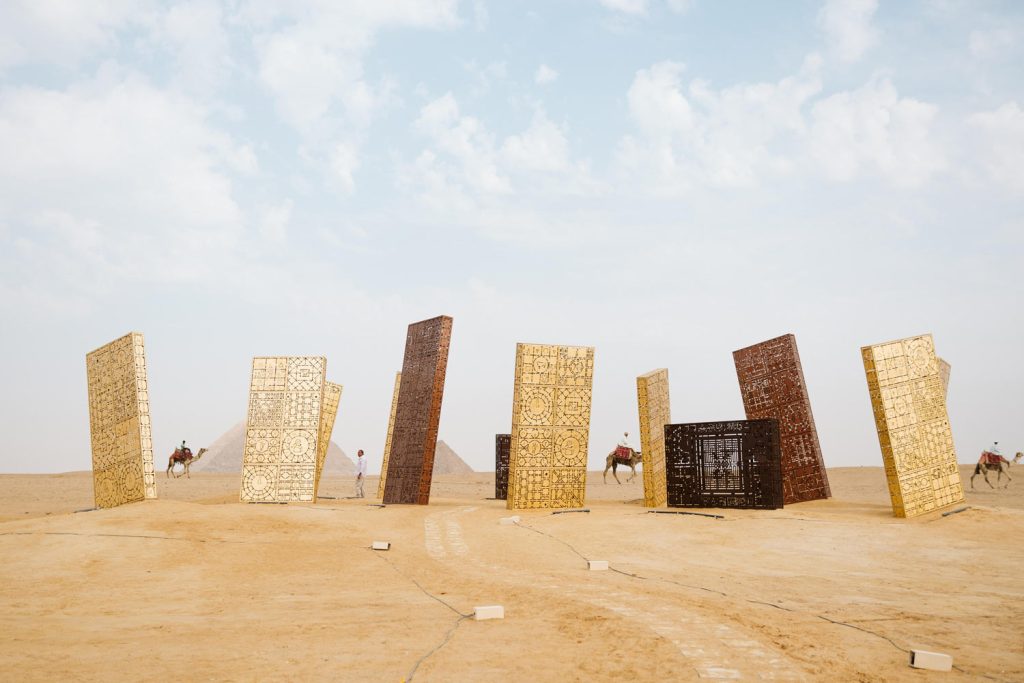
While creating this artwork, Khalifa posed the question, “Is this the discovery of a lost labyrinth or the manifestation of eerie futuristic objects?” Rashid has skillfully played with the idea of time and exploration, of both old and new, by creating these fragments that possess an ancient mythical quality while still being strikingly modern. Additionally, every individual piece exhibits various motifs inspired by the diagram of the Egyptian labyrinth that was presented by Athanasius Kircher, a Jesuit scholar of the 17th century, in his book Turris Babel (1679).
Sabine Marcelis
Sabine Marcelis’ RA represents a beautiful blend of materiality, artistry, and sustainable innovation. It is created using laminated solar glass and serves as a functional sculpture that embodies the symphony of natural elements. The artwork is designed to be off-grid and relies solely on the sun’s energy to illuminate the gnomon after dusk. The artist, Sabine Marcelis, described how the artwork casts a dual enchantment by indicating time through casting elongated shadows on ancient sands, paying homage to its history. Simultaneously, it orchestrates a vibrant choreography of light reflections off its surface, producing an ever-changing footprint of light as the day progresses.
Sam Shendi
Sam Shendi, a British sculptor of Egyptian descent, spoke about his artwork and said, “The Ancient Egyptian civilization has left a lasting impact on the land that demonstrates how imagination can transcend time. Although the physical remnants may not be in their full glory, we can still decipher their strength and power from the statements they make. We can envision the structures that no longer exist and feel the energy and spirit that radiate into the atmosphere.”
Stephan Breuer
The installation called “Temple •I•” features an inverted golden triangle that appears to be floating in space like a divine apparition. It conveys a powerful vision of both tangible and intangible elements through pure light. The triangle serves as a sign within the landscape, prompting viewers to pause and reflect on both the external world and their inner selves with gratitude. The ancient Egyptians aimed for eternal life, and their monumental wonders serve as physical reminders of their legacy.




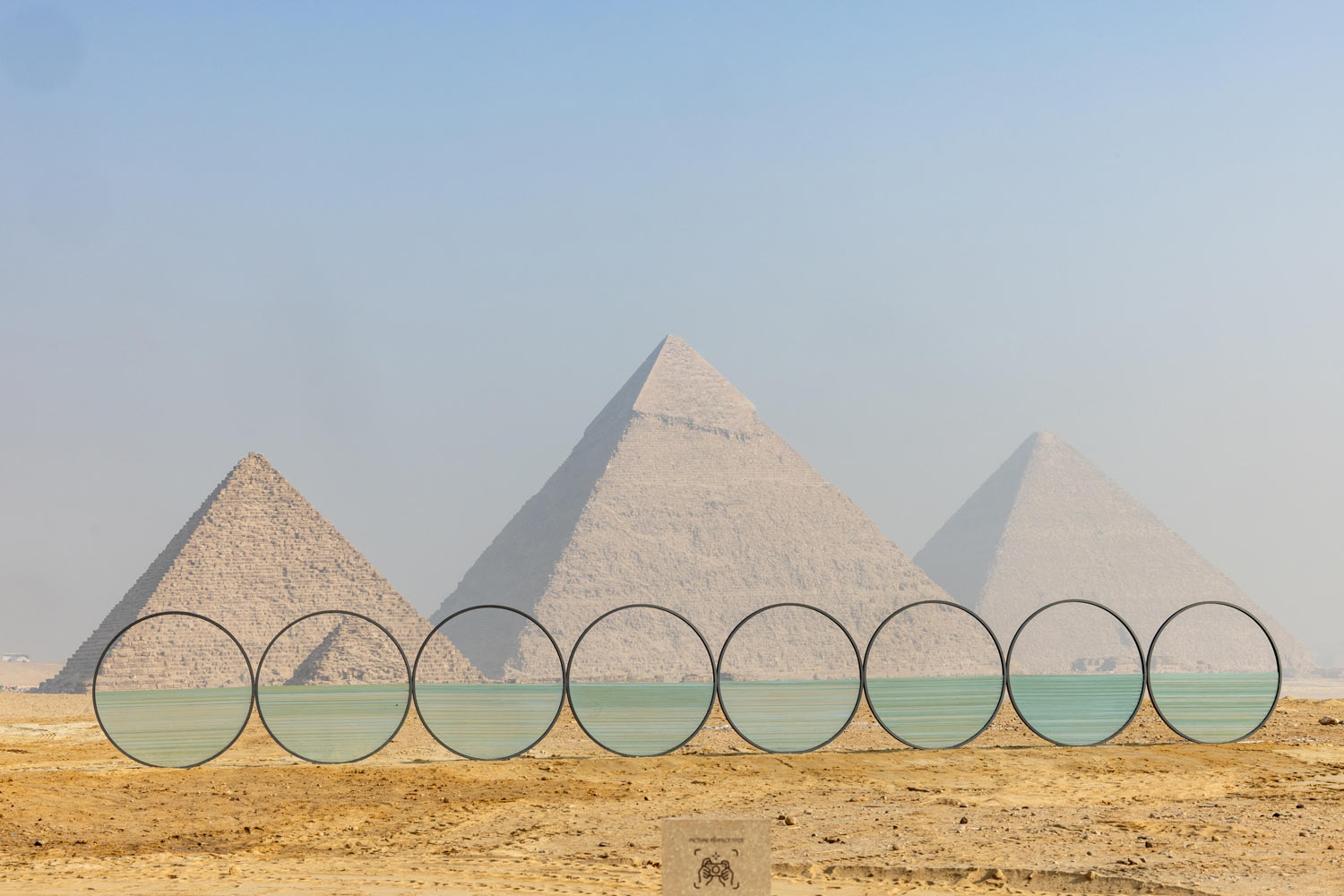
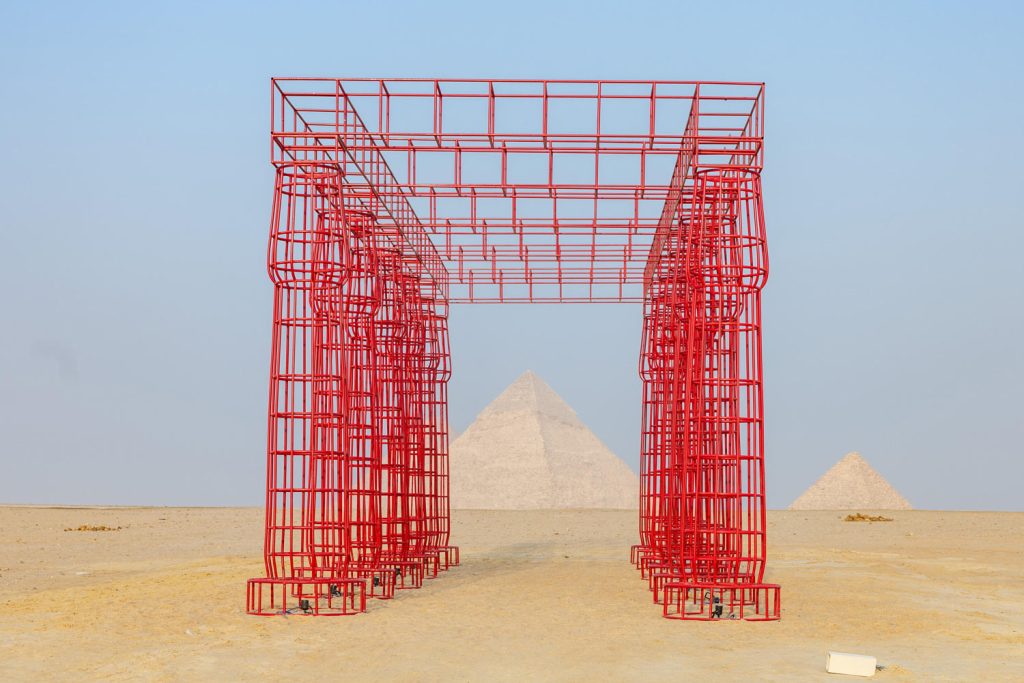
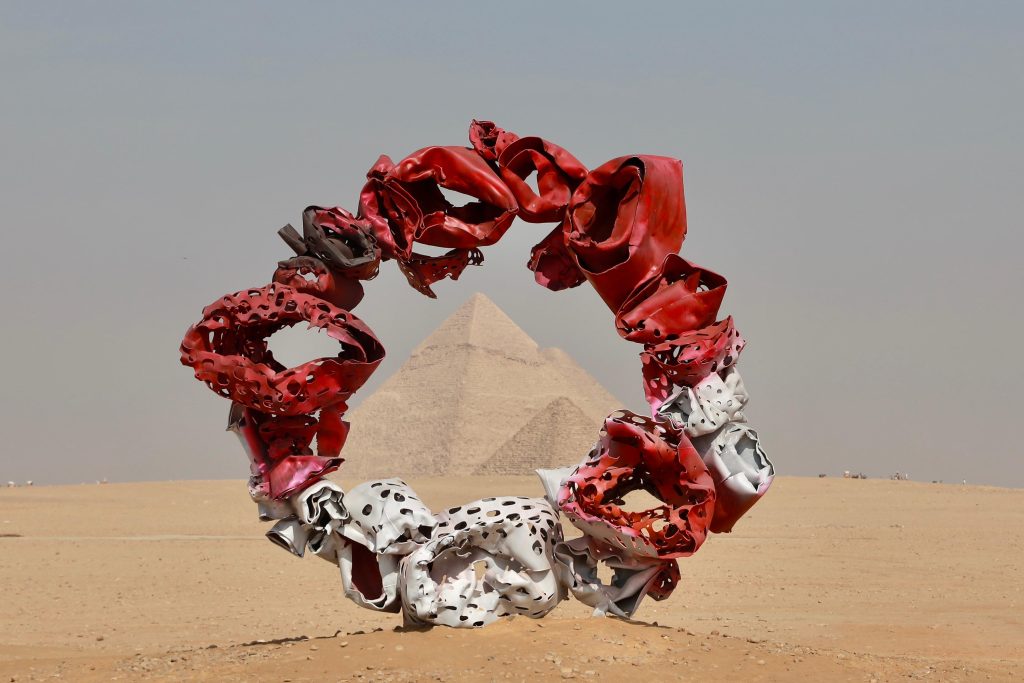
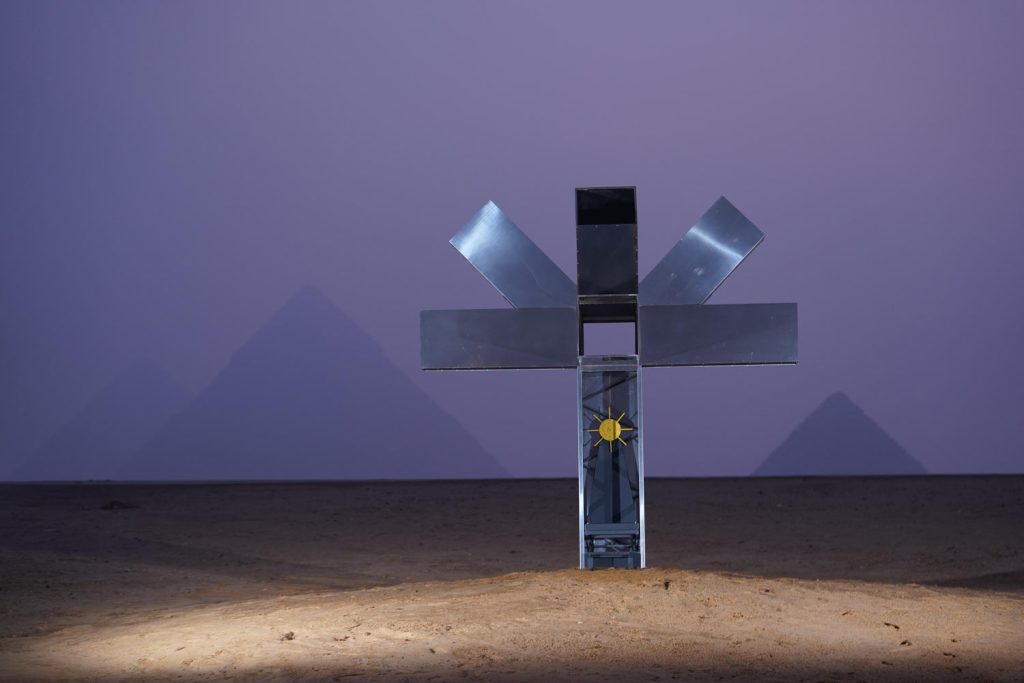
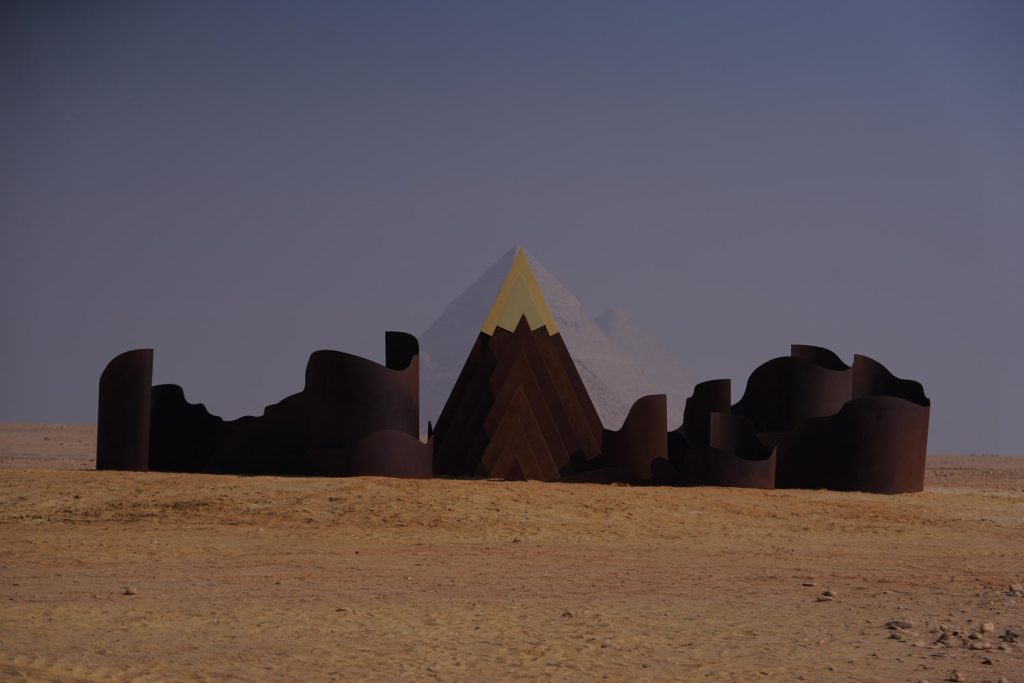
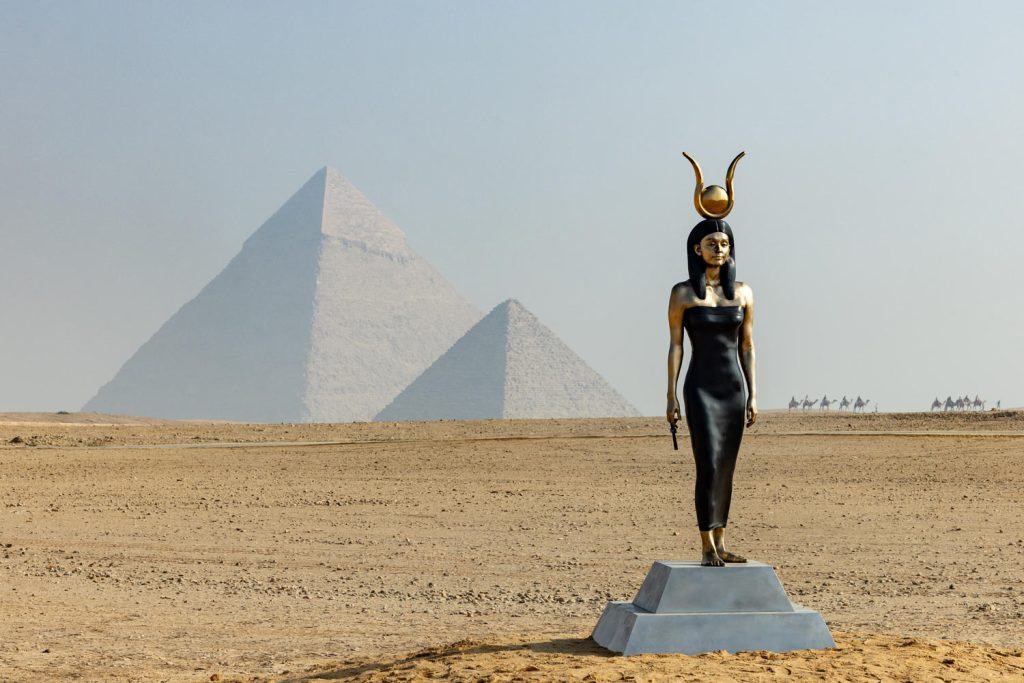
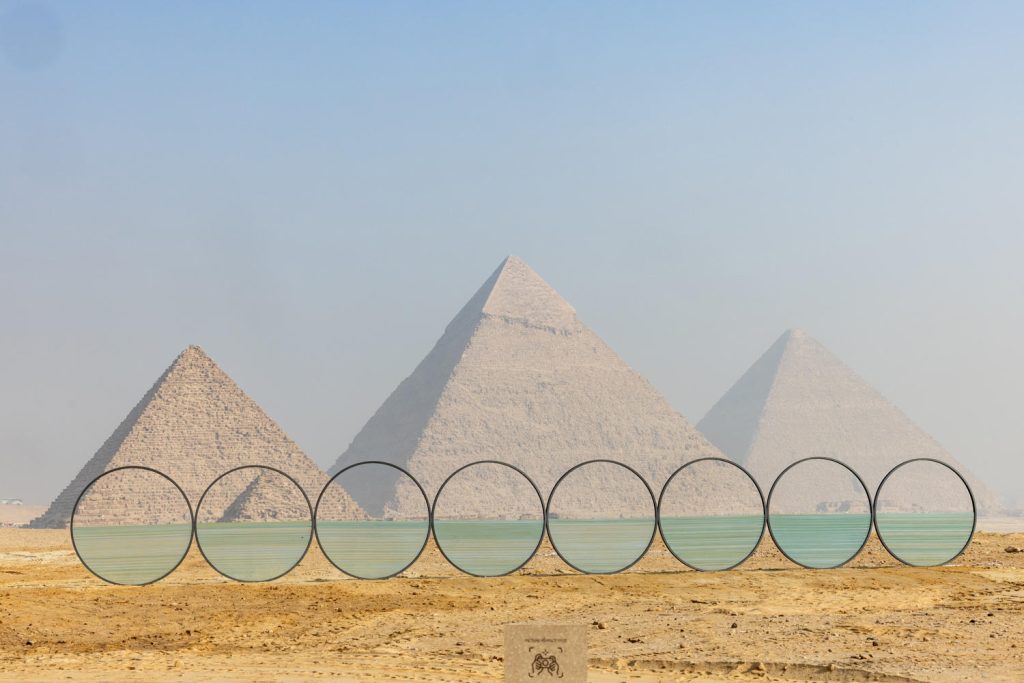
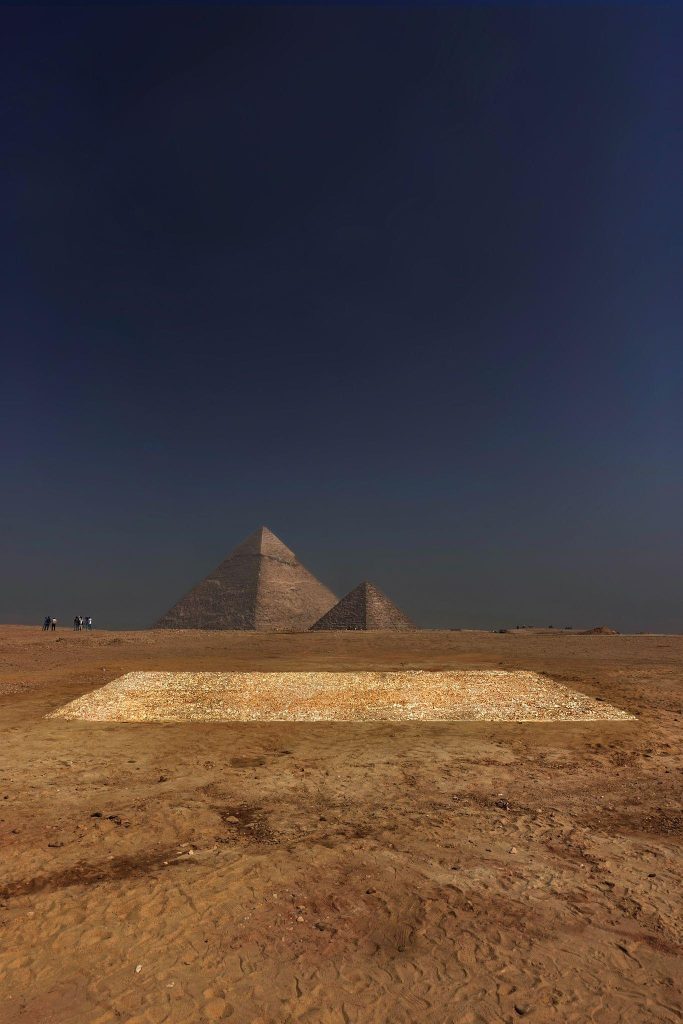
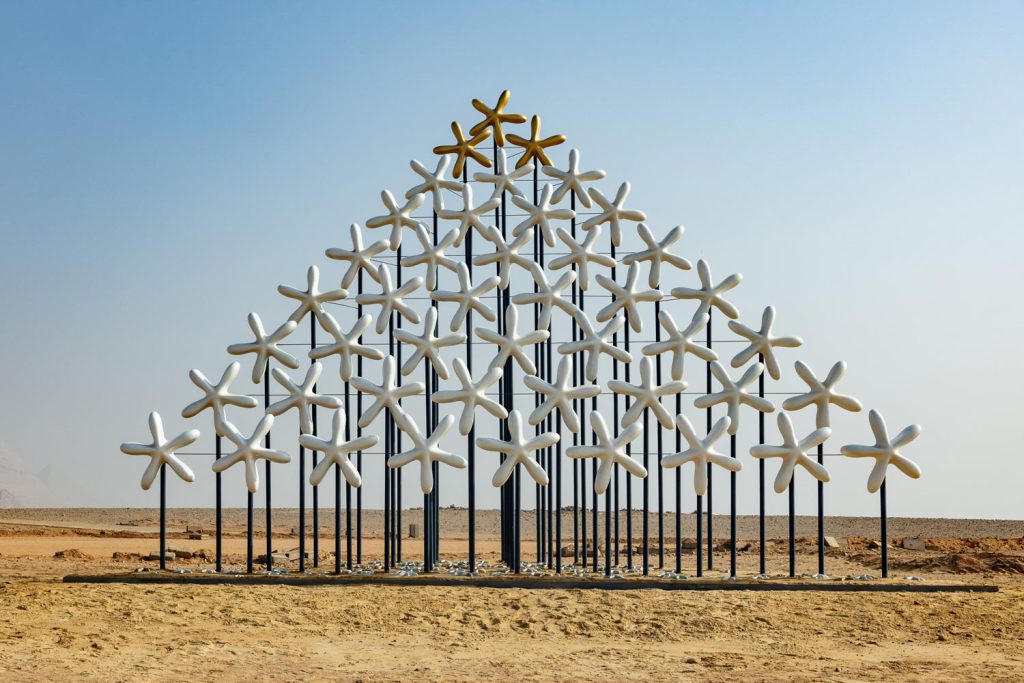
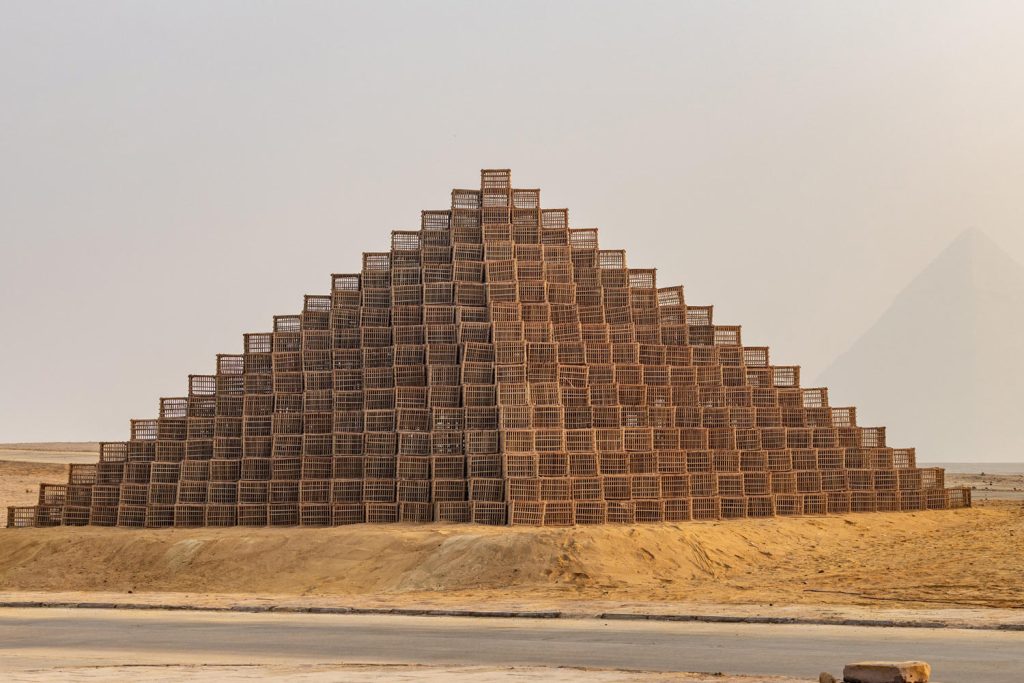
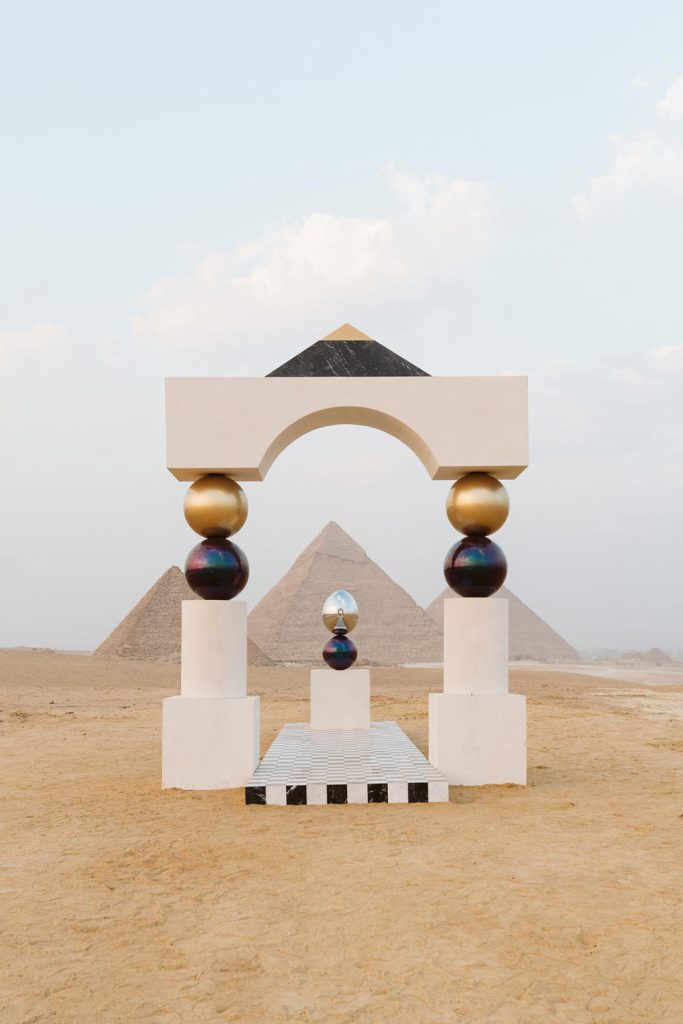
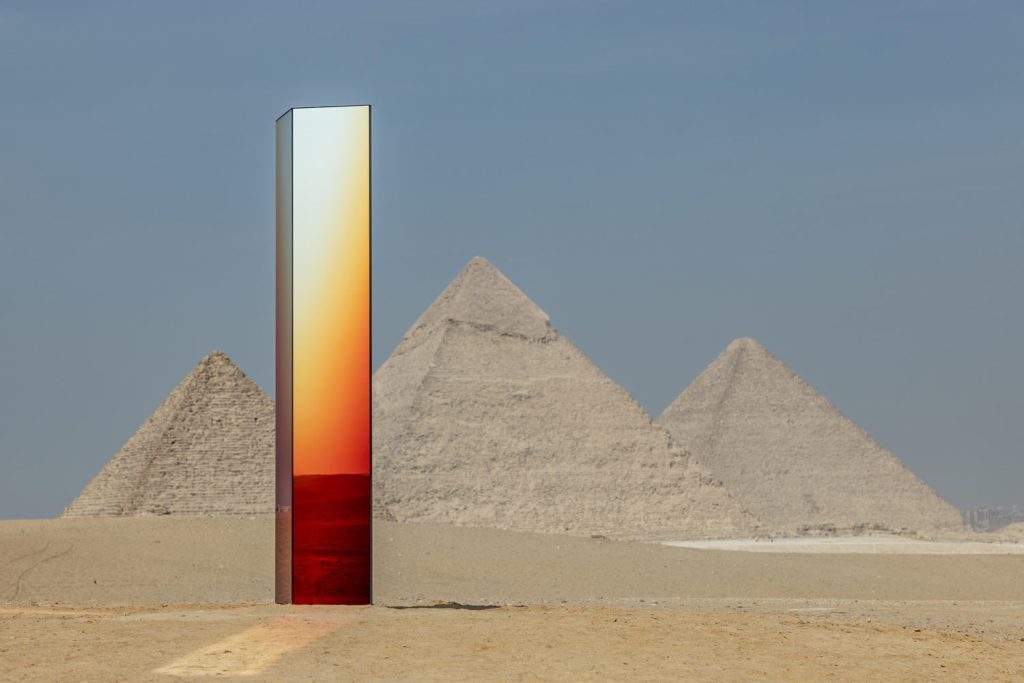
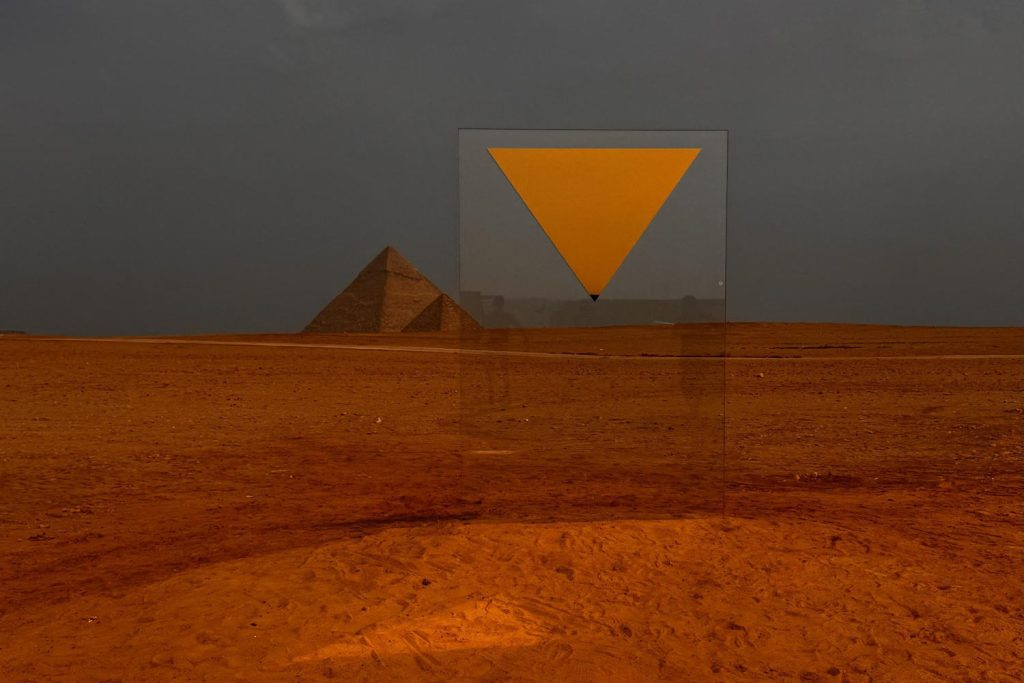














Leave a comment